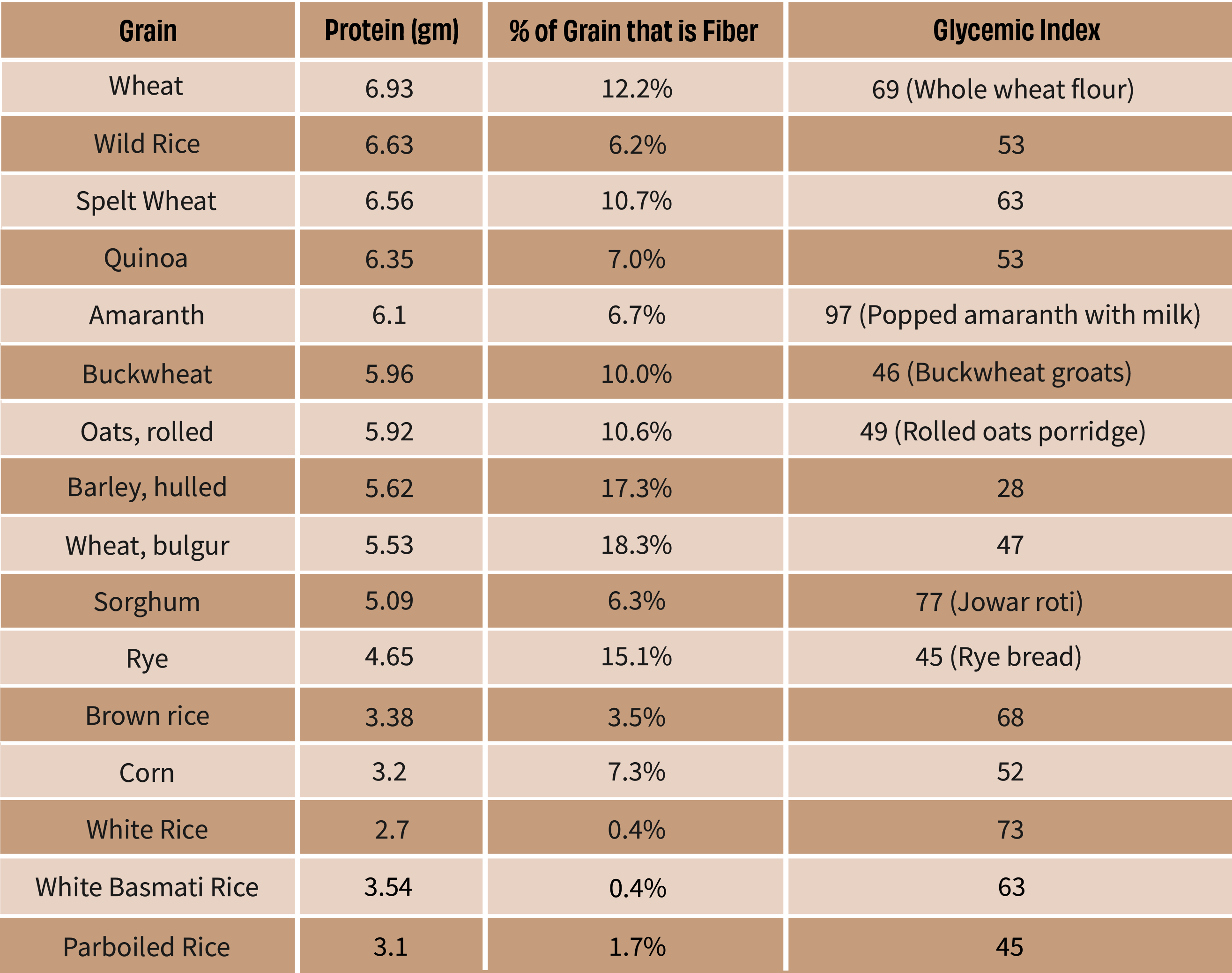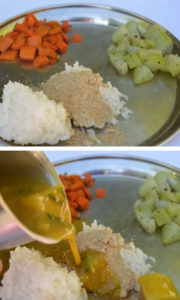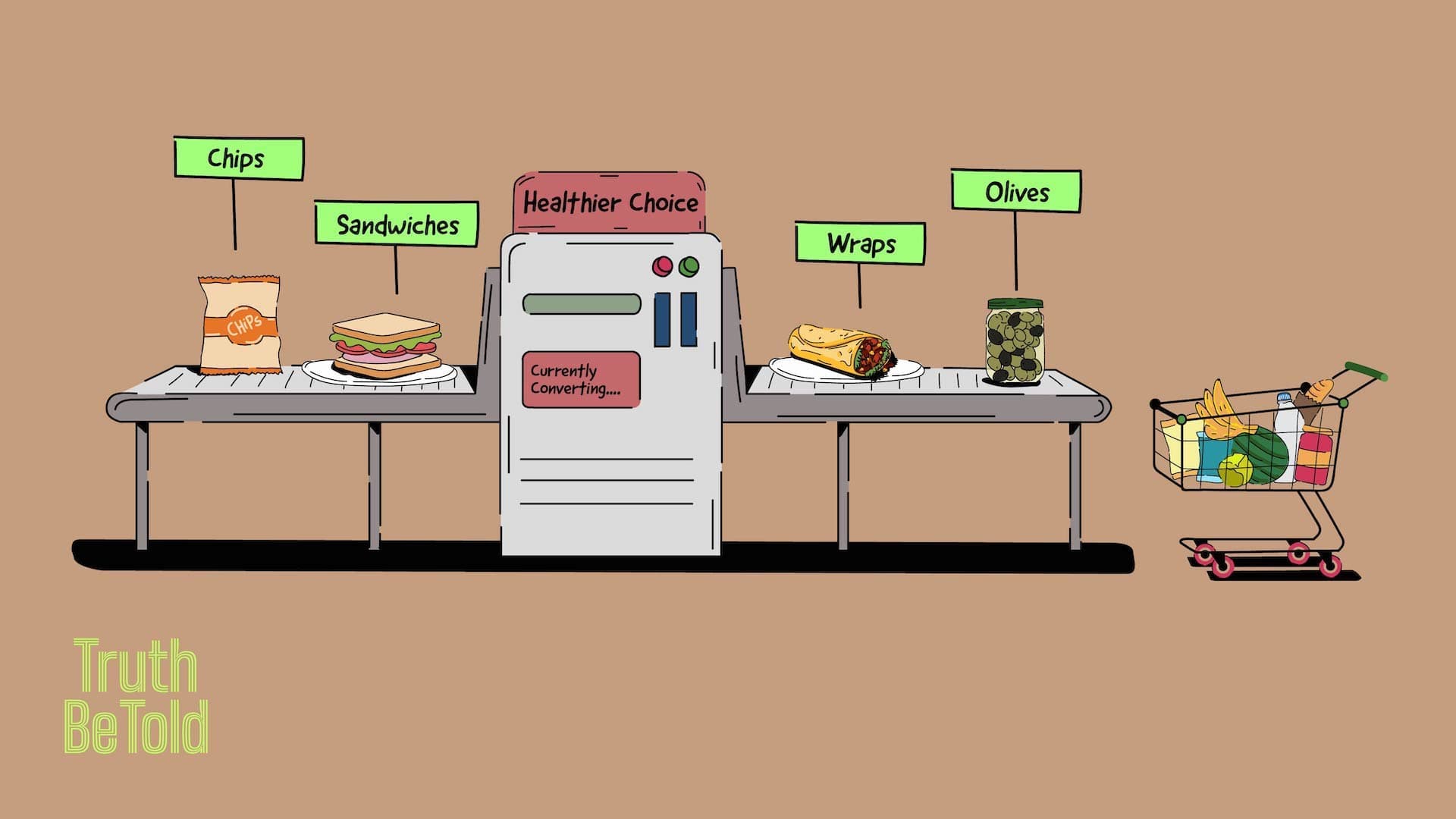Eight swaps to eat better everyday
Eight Swaps for Eating Better
The most trustworthy source of food and
fitness journalism in the country.
Healthy eating and healthy living can feel exhausting in the social media universe. Fitness influencers work out several hours a day. Food bloggers meal-prep on excel sheets. What about us ordinary mortals?
Exotic stuff seems out of reach because while I want to be healthy, I also want to hold a job (and do it well), raise my kids, take care of my house, and other things—life stuff.
Is there no easy way out to eat healthier? There is.
I am an industrial engineer, and one lesson from my work changed how I cook in my kitchen. It’s called Kaizen, the idea of continuous improvement. That small and ongoing positive changes can reap significant benefits in the long run.
That’s the principle I adopted for eating well: one change at a time. Take something you are already comfortable with and improve it daily. Simple swaps. Nothing complicated. Let me take you through eight swaps you can rely on, one at a time, to eat better every day.
1. Swear By ‘Whole’ Grains
Whole Wheat. Bulgur Wheat. Millet. Quinoa. Red Rice.
These are not health fads. These are ‘whole’ grains. And they are so much better — nutritionally superior — than ‘refined’ grains.
Simple reason. Whole grains have three parts: bran, germ and endosperm. The refining process strips off the outer two layers, bran and germ, meaning we lose a lot of nutritional value in refined grains like white flour and white rice — as much as a quarter of the protein in grain and a half to two-thirds or more of a whole bunch of nutrients. All gone.

The structure of a grain
But there are so many grain options. How to choose?
That depends on what you want. Looking for more fibre? Eat barley. More protein? Eat wheat or amaranth. So look at the data and decide. Here is a table for your reference.
Tinker around with these grains. Each one has its unique culinary superpower. For example, barley makes a great porridge, quinoa fluffs up nicely to serve as a rice substitute in stir-fry, and bulgur —a nutritional powerhouse — cooks up super quickly, making it an excellent candidate for upmas and khichdis.

Protein, fiber and GI of grains
2. Make Rice Great Again
It’s hard for Indians to give up on rice. This yummy grain, which I love, is a staple of our diet. It’s a tradition. So many of us grew up eating dal chawal — the comfort food you can always turn to.
But let’s face it: white rice has well-documented downsides. As explained above, the grain’s nutritionally dense outer portion is removed during manufacturing, leaving white rice with the least protein and the most levels of carbohydrates among competing grains. Even fibre content is abysmal. And the glycemic index is high. So while there is no need to say goodbye, we must watch our consumption.
I have two tips.
One, add a teaspoon of ‘wheat germ’ or ‘oat bran’ to your rice: add back what was lost ̉— the outer grain — in the manufacturing process. Wheat germ, for instance, has high levels of Vitamin E, folate, protein, fibre and minerals. Use it. The good bit? You only need to add a tiny amount to get the most benefits.
Look at the photo below.

Adding wheat germ/oat bran to rice
I added only one teaspoon of wheat germ to my plate before adding sambar. It makes the meal nutritious without taking away the taste of the sambar.
Two, flip the proportions: grains (wheat or rice) remain at the centre of the standard Indian diet, surrounded by beans (or lentils) and veggies. But we know that beans and seeds are nutritionally superior.
So here is something to think about: can you flip the proportions in your plate so that rice becomes the supporting actor and not the main star?
The Japanese do it. They eat only one small cup of white rice with every meal. Vegetables and protein far exceed the quantity of rice they consume. That reduces the glycemic load of the meal. So fill your plate with numerous daals, beans, greens, and seeds. Eat rice — just reduce its portion.
3. Eat The Whole Damn Dal
Everyone talks about whole grains. But not so much about whole legumes. Let’s do that now.
The whole legume consists of the seed coat (hull), embryo and cotyledons. The cotyledons (fleshy insides) provide the bulk of the nourishment, similar to the endosperm in grains. So just like the manufacturers sell us white rice, they rip apart the whole moong bean to give us the yellow insides.
In other words, the ‘whole’ green moong is nutritionally superior to the split yellow version of the moong dal. So eat the green moong much more.
Just one thing: I do not advise straining your digestive system with green moong for a baby, a person older than 70, or those sick. Use dehulled yellow beans instead. But suppose you are a diabetic, pre-diabetic or eating pizza and burgers weekly. In that case, I’m sure your digestive system can handle it, and your body can immensely benefit from eating whole green moong.
Read more here.
4. Unsung Heroes: Chana Dal and Masoor Dal
All dals are excellent food sources and good sources of plant protein. But don’t get into a rut of using the same dal repeatedly. Nature is clever. Something special is hidden in each ingredient—the more diverse your eating habits, the more of the nutrition spectrum you will cover.
I have two specific recommendations.
One, chana dal has vast amounts of hidden fibre—more than any other. So we need to embrace toor dal a little less and chana dal a little more.
Two, masoor dal is an underrated lentil, at least in the South Indian diet. But it tops the chart among all dals for its iron content, which is especially crucial as most Indian vegetarians are iron-deficient. Moreover, there is a limit to the amount of greens one can eat, so eating masoor dal is an easy way to bump those iron levels up.
Read more here.
5. Mom’s Right: Ghee with chawal-dal? Not bad.
Now I am going to contradict myself, but only partially. Whenever vegetarians think of protein, most think of dals. But these lovely lentils are primarily a source of carbs. Chana dal, for instance, is 70% carbs and only 25% protein.
So here is a tip: change portions and add non-carb sources to your comfort meal. One idea is adding some ghee with a smaller amount of dal-rice combo. That will lower the GI of the overall meal compared to bigger portions of rice without the ghee. Pairing carb-rich meals with foods containing little or no carbohydrates — meat, fish, eggs, avocado, and ghee — help in maintaining blood sugar levels.
Just pair them smartly, and your meals will become more nutritious and delicious.
6. Wraps Beat Sandwiches
How do you choose between a wrap and a sandwich? Both are fundamentally the same thing: veggies and dressing stuffed inside bread.
Yet they are different. Sandwiches are delicious, easy to eat and less messy than a wrap. But if you are trying to eat smart, wraps beat a sandwich.
a) Lower calories: Sandwiches need a top and a bottom portion to hold the stuffing. Each slice of bread is around 110 calories, the same as the half of the lavash roll I use for the wrap. So choosing the wrap leaves you an extra 110 calories saved from removing a slice which you can ‘spend’ on something else —maybe carrots and hummus on the side, or some nuts, or even some chips, if you may. Of course, you could also choose not to eat those extra 110 calories and pocket the deficit—plain math.
b) More nutrition: Filling a sandwich can be tricky. You know that. You cannot stack stuff beyond a point. It starts toppling. Wraps are cool. Just put it in and eat the roll. (Just put more of the good things in.)
Read more here.
7. Let The Oats In
Whenever I research the nutritional levels across different grains, I am blown away by the fact that oats are always on the top.
Calcium levels? Oats are better. Iron levels? Same. Impressive numbers for protein, iron, magnesium, phosphorous, zinc, folate, etc. It’s a multi-vitamin tablet packaged in a grain format. So let the oats in.
Now the types of oats you get in the market are based on how the grains are cut: steel cut, rolled, or the instant variety. The GI varies — steel cuts being the best to avoid that spike.
Read more here. And I shared recipes to integrare oats in daily diet here.
8. Say Bye To Chips. Say Hello To…
There is a reason why I avoid potato chips. They are designed for addiction. As Michael Moss writes in his excellent book ‘Salt Sugar Fat: How the Food Giants Hooked Us by Michael Moss’:
‘Chips are nice and salty, which tells the brain to eat more, and loaded with fat […] Potato chips hit the trifecta because they’re also loaded with starch, which converts to sugar the instant it hits your tongue. And glucose spikes lead to cravings…The potato chip is the single largest contributor to weight gain in the country. It’s not for nothing that Lay’s slogan is ‘you can’t eat just one.’
So I would love to banish potato chips from the house. (But it will be unfair to my husband, who loves chips and has much more self-control than I do.)
Here is what I did: replaced them with healthier substitutes for the salty snack craving. Two that I love are lower in calories and lower in fat and yet hit the spot when it comes to snacking.
Seaweed: This one is a hard one for many vegetarians. I know that because I had to get over the fishy smell of the seaweed and get used to it. But over time, I started liking these thin and crispy sheets. My kids love it. They snack on it without any mental block of “it smells different”. So if you are new to seaweed, give it a few tries and a few brands before you make up your mind.

Seeweed
Olives: I get 12 cans of olives every 2-3 weeks. My younger daughter can be accused of finishing half of it. She is crazy about olives. They have 75-80% water, so they are more filling than chips. The high water content makes it impossible to binge on it. And again, in terms of nutrition, they have additional Vitamin E.
Both of these are minimally processed plant foods. And the less processed a food is, the harder it is to binge on it, unlike potato chips.
Conclusion
I hope you find these tips helpful. These changes take time. But if you track your progress, not in days or weeks, but in months and years, you will surely see your lifestyle getting much healthier and your mind making consistently better choices. What’s even better? You start feeling in control of your efforts to improve your health and your family — without fancy stuff.
Click the logo to sign up for the newsletter
More from Truth Be Told
Safest cooking utensils for healthy living
Your brain needs to relax and here’s how you can do it
Here’s how I got my cholesterol levels down
Why you can’t eat just one chip
The Definitive Guide to Smart Food Shopping
I solved the mystery of the afternoon slump with CGM
Diwali indulgence won’t make you fat
What spikes your blood glucose?
Should you count calories?
Letters to Editor: Reader Response 01
My experiments with sleep
Why weight loss is a rigged game
You can’t be ‘healthy’, if you don’t know what it means
Food and fitness journalism is broken. We are fixing it.

